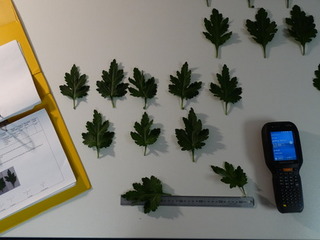
Supporting the delivery of Plant Breeders' Rights legislation
NIAB’s foundations are built on the provision of statutory services to the agricultural and ornamental sectors. This includes characterising and evaluating new crop varieties in Distinctness, Uniformity and Stability (DUS) tests. This is based upon unique and long-established plant phenotyping skills, datasets and biological resources developed by NIAB, backed up with appropriate facilities for data management, testing facilities, analytical services together with glasshouse and field trials across a wide range of agricultural and ornamental species.
NIAB’s work provides the basis for protecting plant breeders’ intellectual property or Plant Breeders’ Rights. It allows variety registration and consumer protection through the National List system. In the UK these tests are administered by the UK Government’s Animal and Plant Health Agency (APHA) for National Listing and UK Plant Breeders’ Rights (PBR). On their behalf, NIAB carries out the DUS testing of wheat, barley, oats, winter oilseed rape, field beans, sugar beet and fodder kale.
We have the facilities and expertise to test over 1,000 new varieties each year. This involves growing and maintaining a diverse range of plant species, and recording many hundreds of thousands of characteristics in growing plants and seeds. Using image analysis for phenotyping in variety assessment, the team can measure the precise dimensions of plant parts including petals, pods, leaves and cotyledons. It is also used in other areas of research, for example in identifying holes made by bruchid beetles in field beans and measurement of wheat embryos.
Spotlight on: Ornamental plants
NIAB tests ornamental variety applications on behalf of the UK Plant Variety Rights Office, and equivalent bodies in other International Union for the Protection of New Varieties of Plants (UPOV) member states. Particular specialities are: Chrysanthemums, Dahlias, outdoor container plants such as Diascia and Nemesia and many herbaceous plants such as Echinacea, Heuchera, Campanula, Salvia and Penstemon, and woody plants such as Clematis, Hebe and Ilex. The Ornamentals team has access to a purpose-built micropropagation unit, maintaining a collection of 2,500 varieties of chrysanthemums, 2,500 square metres of high specification glass and 3,000 square metres of protected outdoor growing space.
